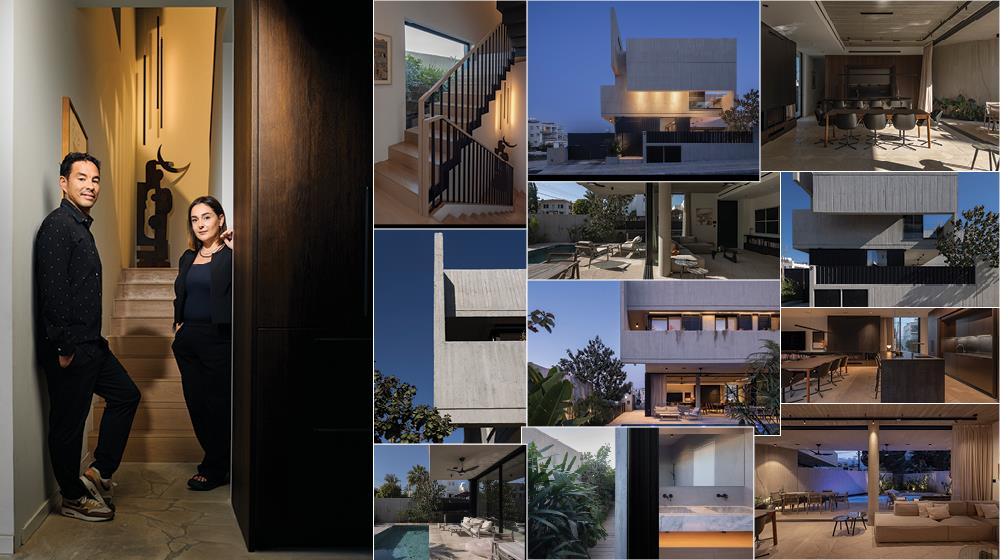Elina Kritikou and Kenzo Yamashita are partners in both business and life. In 2009, they co-founded EKKY Studio Architects, guided by a philosophy of designing sustainable, anthropocentric architecture rooted in culture and tradition – a philosophy that also anchors their own home.
The couple invited The Cyprus Journal of Wealth Management into their urban Nicosia residence to share the form, function and thinking behind its exceptional design.
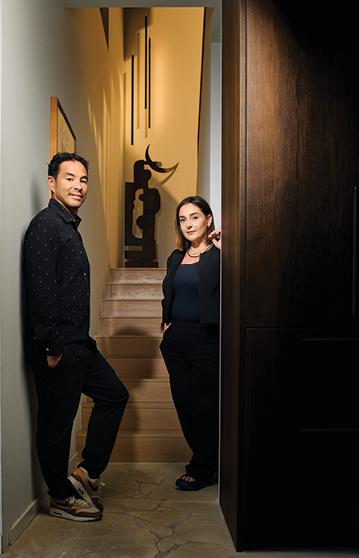
Let’s start at the beginning: what inspired the design of your house?
Kenzo Yamashita: Our goal was to present an interpretation of an ergonomic, high-quality urban residence, one that can balance sculptural expression with architectural precision. This city house is designed for optimal comfort and functionality in everyday living, with a simple timeless design approach.
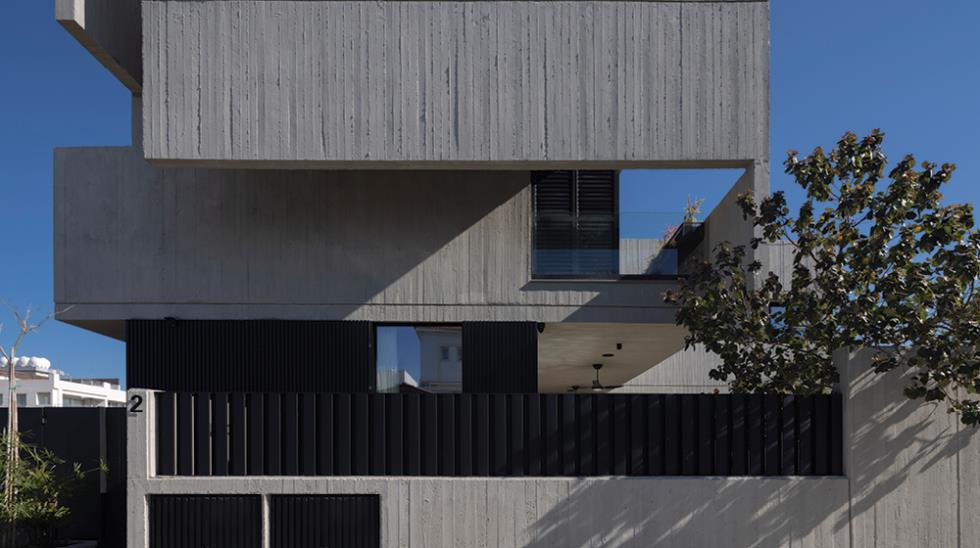
What kind of architectural thinking shaped the overall concept? What were you trying to achieve with this project?
Elina Kritikou: This project is a thoughtful study of the essential spatial requirements, amenities and quality of environment needed for a contemporary townhouse that supports the lifestyle of our family. It explores how smart design strategies, a sustainable mindset and carefully local materials can come together to create a home that is both highly functional and deeply liveable.
Kenzo Yamashita: Our aim was to create a project that reflects a commitment to human-centred living, where aesthetics and usability reinforce one another. The result is a home that feels both grounded in its environment and elevated by its form.
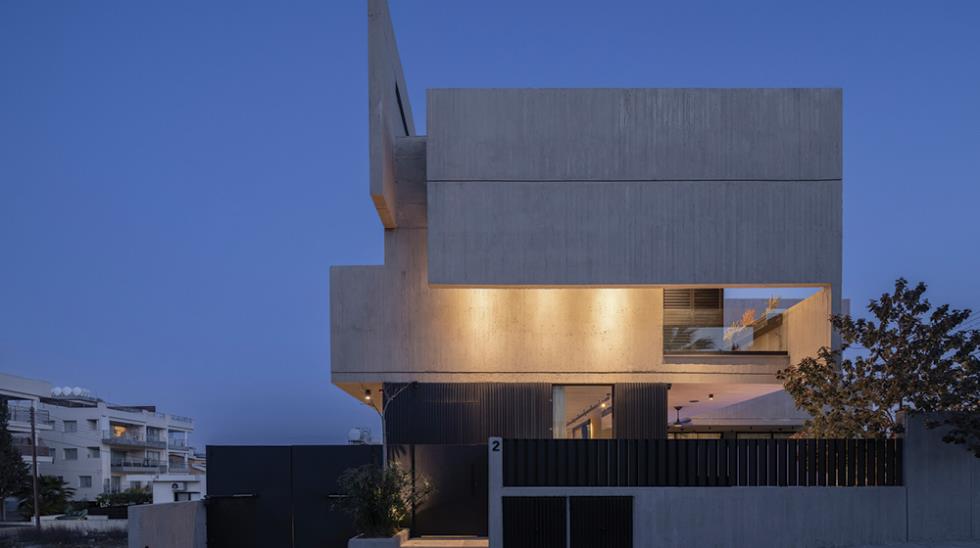
What do you consider the home’s most distinctive feature? What would you say gives it character?
Kenzo Yamashita: The house’s defining feature emerges from its distinctive form, which is designed to provide privacy from the surrounding context while simultaneously opening to a series of vertical gardens and integrated outdoor spaces. This thoughtful configuration ensures that every room benefits from natural ventilation, daylight and access to a private garden – creating a serene, inward-focused living environment that remains connected to nature.
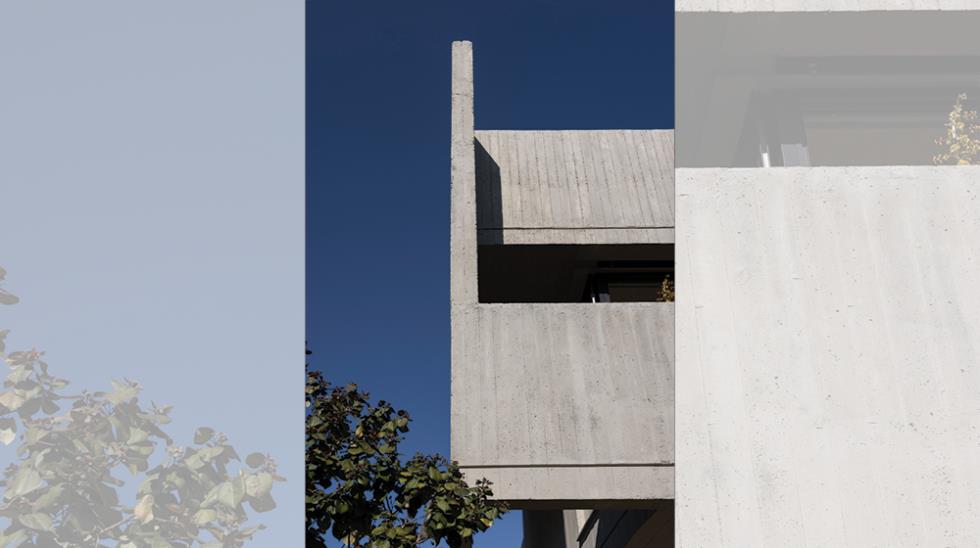
Sustainability is a modern buzzword but how did it actually inform your process and decisions here?
Elina Kritikou: Sustainability was a core consideration throughout the design process, influencing both form and function. The house is designed as a compact yet layered volume that creates privacy while maximising environmental performance. The sculptural concrete form, oriented and articulated strategically, reduces exposure to direct sunlight while allowing cross-ventilation and natural lighting in every space. We incorporated gardens and enclosed outdoor terraces, which act as thermal buffers and contribute to passive cooling, reducing the reliance on mechanical systems. These green elements are directly accessible from most rooms, creating microclimates that enhance indoor air quality and wellbeing.
Kenzo Yamashita: Material selection also played a crucial role. The use of local materials not only adds a timeless aesthetic but also enhances the sustainability approach of the project. Even though we added large, glazed openings to optimise daylight and to ensure a steady flow of fresh air, at the same time overhangs and shading elements are calculated to minimise heat gain during summer while allowing winter sun to warm interior spaces. In essence, sustainability in the approach of our design was not an afterthought – it is embedded in the spatial logic, the material palette and the relationship between interior and exterior spaces.
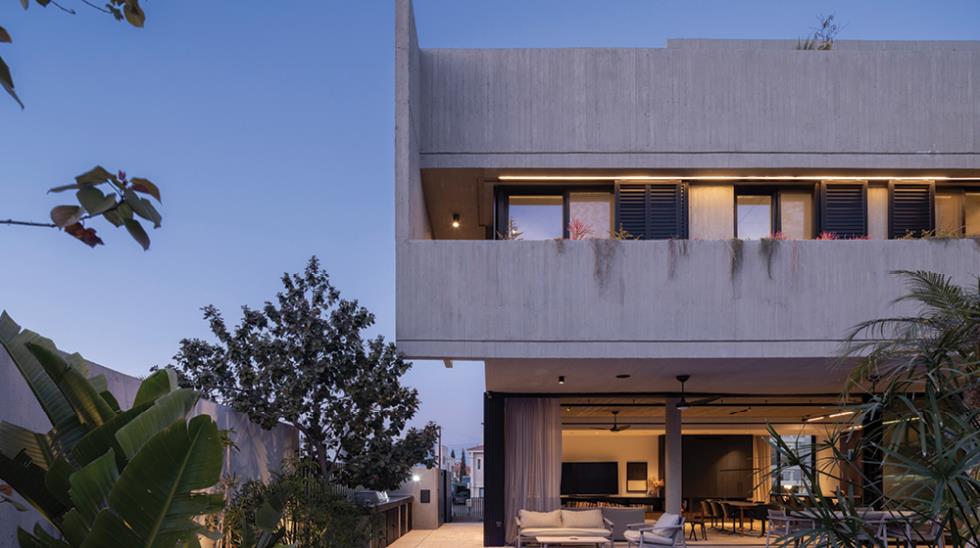
On a side note, are there any specific cultural influences, local or otherwise, reflected in the design?
Elina Kritikou: As a family with a blend of Cypriot, French and Japanese cultures, it was important for us to weave elements from each tradition into the design of the house. This cultural layering shaped everything from the spatial layout to the material choices, creating a home that feels deeply personal and familiar.
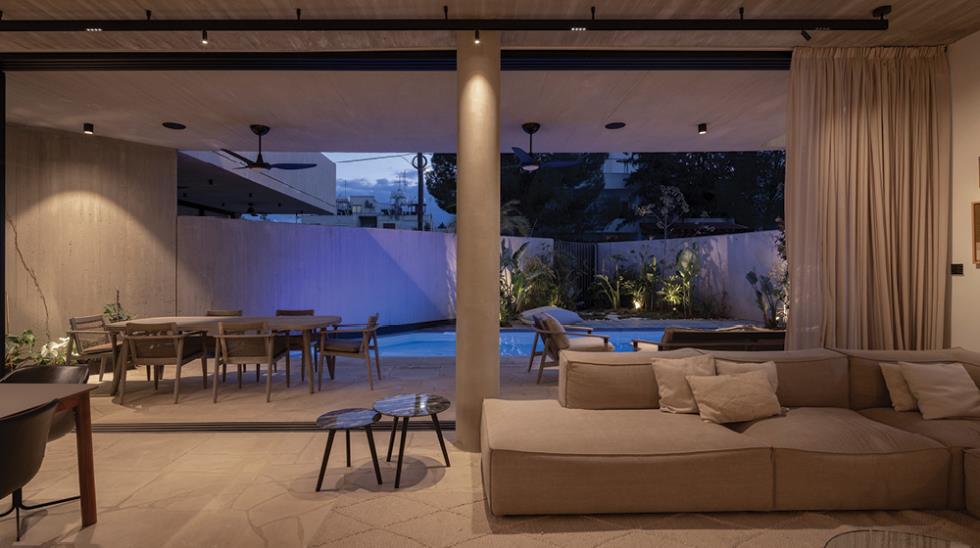
Let’s move inside: how did you approach the interior spaces in terms of texture, tone and layout?
Elina Kritikou: We chose natural, honest materials such as concrete, natural local stone, marble, wood and metal in their raw or lightly treated forms. These materials were chosen not only for their durability and low maintenance but also for how they age gracefully over time. The exposed concrete seen throughout the structure and the stone floor on the ground floor continues indoors, creating visual and functional continuity.
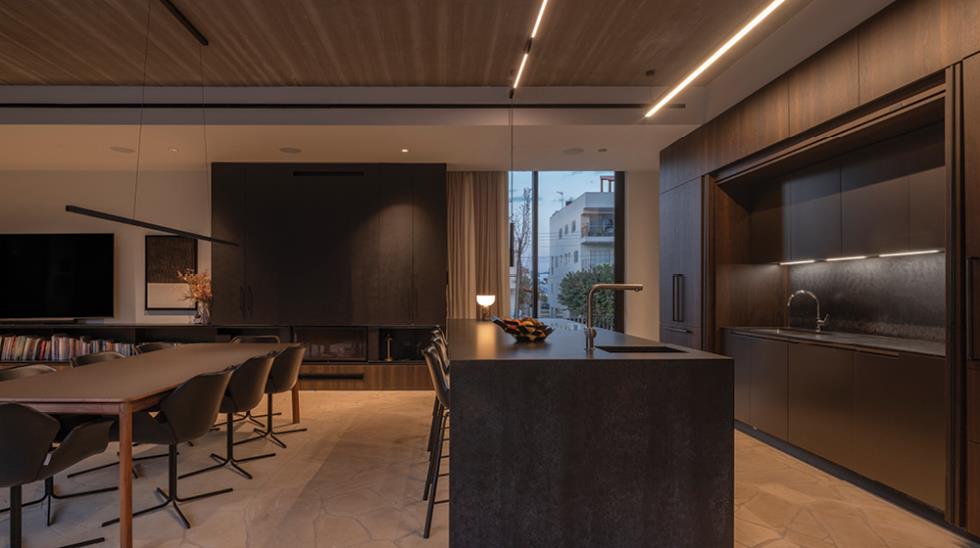
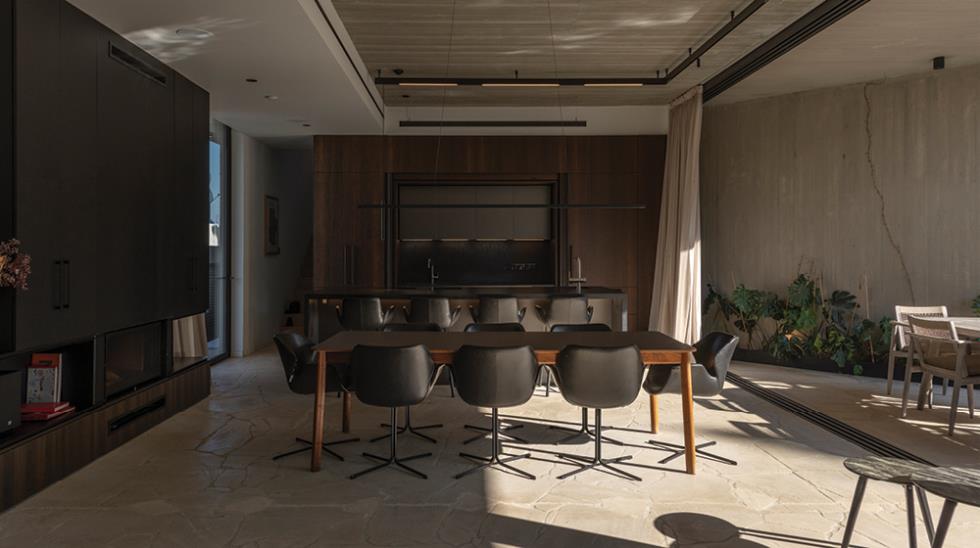
It’s a visually striking home but it also appears highly liveable. How did you find that balance between beauty and usability, aesthetics and practicality?
Elina Kritikou: The windows and openings frame views of outdoor gardens, allowing nature to flow into the interiors, blurring the boundary between inside and outside. The material palette was intentionally kept neutral to let light, shadow and greenery become the main decorative elements. Functionality was equally important. Every decision was guided with the aim to create comfort, flexibility and simplicity.
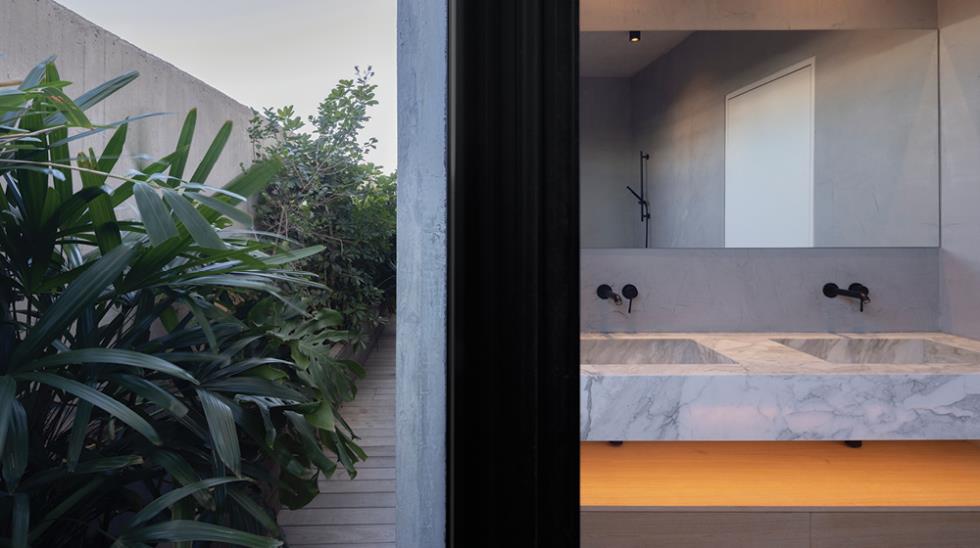
Do you each have a favourite corner, moment or element in the house?
Elina Kritikou: I really enjoy that the layout supports both quiet retreat and social interaction, with open-plan communal spaces on the ground floor and more private, serene zones on the upper levels.
Kenzo Yamashita: One of my favourite aspects of the house is the integration of hidden gardens within the supportive spaces, such as bathrooms, vertical circulation areas and transitional zones. These pockets of greenery extend the interior experience, allowing nature to be present in all the spaces. By blurring the line between inside and outside, these gardens bring softness, light and a sense of calm to spaces that are often overlooked, creating moments of quiet retreat throughout the daily routine.
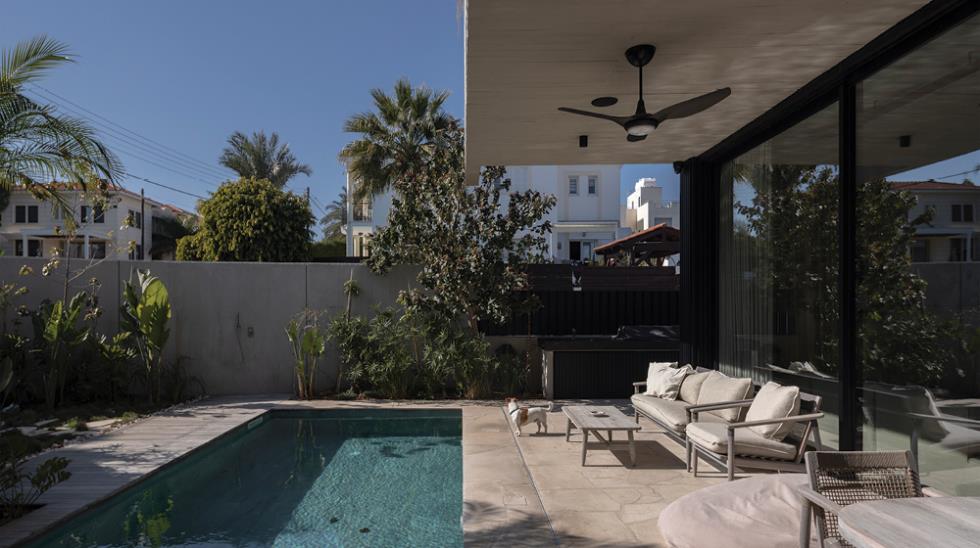
Finally, what advice would you give to someone looking to create a unique and impressive design for their home?
Elina Kritikou: I would advise homeowners to begin by taking the time to truly observe and understand how they live – what their daily rhythms are, what spaces bring them comfort and what environments inspire them. A meaningful and unique design starts with clarity about your lifestyle, values and long-term needs. Rather than chasing trends or replicating something seen elsewhere, they should focus on what feels authentic to them.
Kenzo Yamashita: A custom home should reflect the personality, culture and aspirations of the user. Working with a design team that listens carefully and isn’t afraid to challenge conventions to meet your needs it is a key. To prioritise quality over quantity and sustainability over superficial finishes is also very important, in my opinion. In the end, the most impressive homes are not necessarily the largest or the most complex – they are the ones that feel right every day for the people that use them.
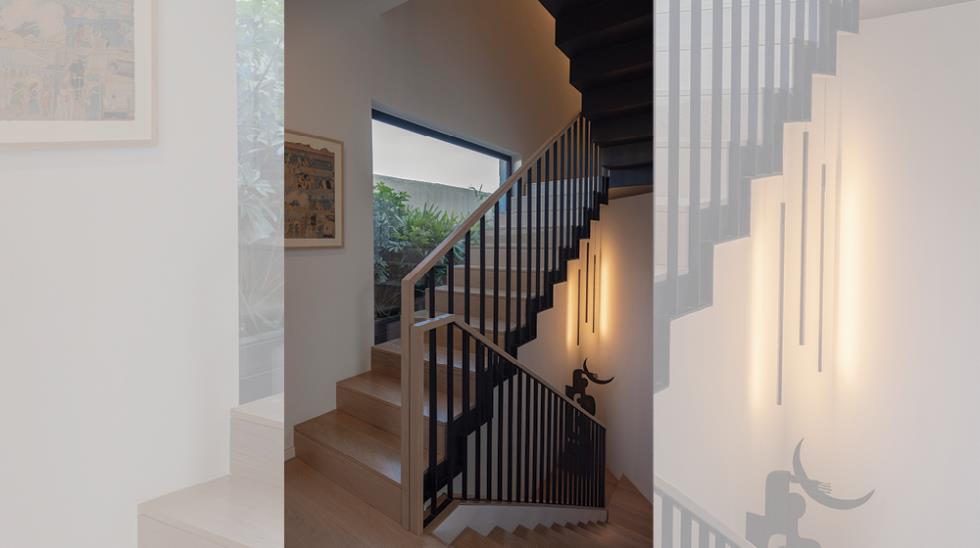
Project Name:
The TownΧouse
Design:
EKKY Studio Architects
Total covered areas:
300 square metres
Year of Completion:
2023
Floors:
3
Bedrooms:
Master bedroom with veranda and ensuite bathroom with outdoor garden; 2 kids’ bedrooms with veranda; shared kids’ bathroom with outdoor garden; guest room/office ensuite with private veranda; maid’s room ensuite with private veranda.
Additional spaces:
Open plan kitchen, living room, dining room, kitchenette, laundry room, guest toilet, swimming pool area, garden sitting and dining area, storage room, parking area, small vegetable garden.
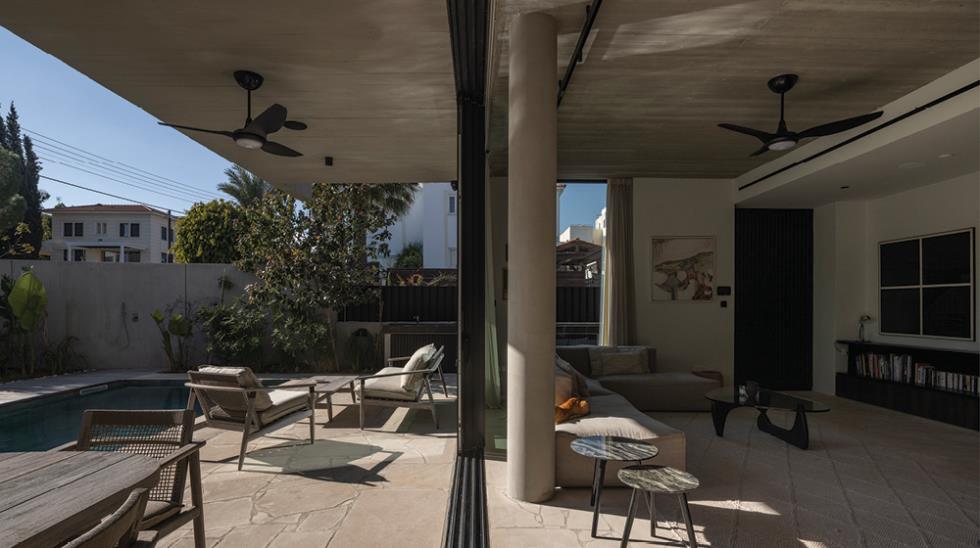
Photo of Elina Kritikou and Kenzo Yamashita: TASPHO. Other photos: Creative Photo Room








